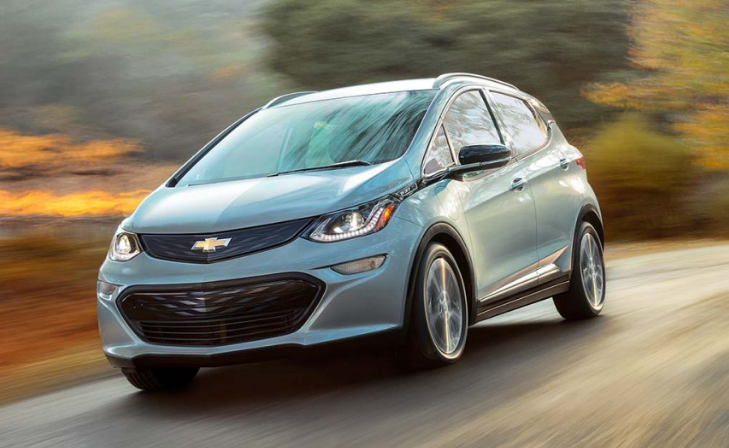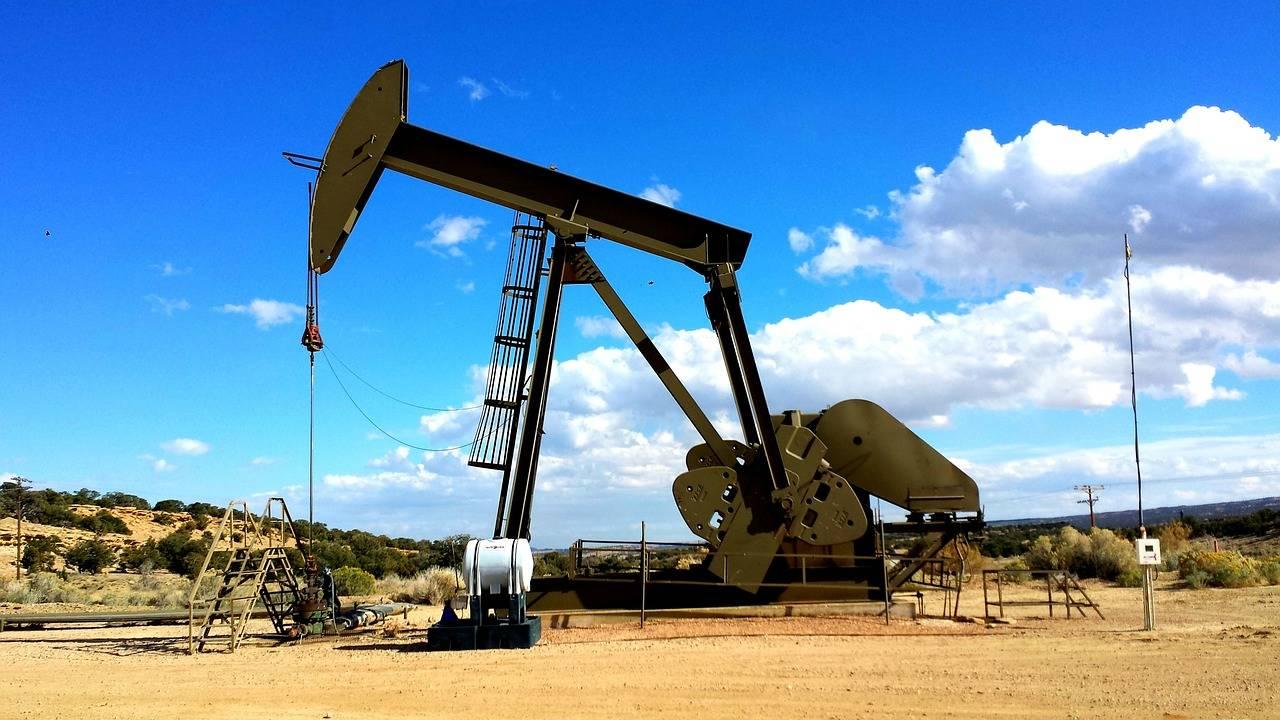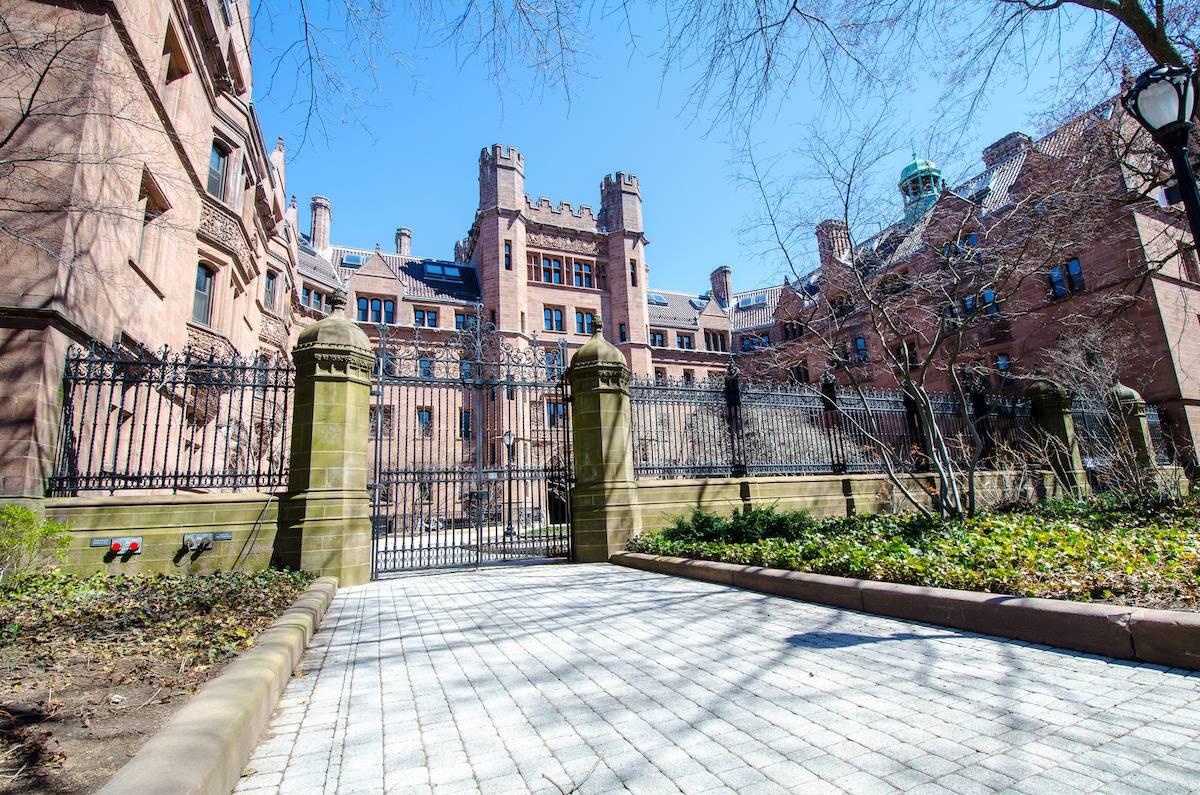Is GDP Inextricably Linked With Corporate Giving?


By Nita Kirby
A strong market, rising income and personal net worth is a foundation for success in nearly any economic setting. Studies show that gross domestic product (GDP) has a direct influence on the state of philanthropy in the United States, but are the two inextricably linked?
Over the past four years, we have seen a steady growth of corporate philanthropy in the U.S. When taking a look at overall giving during the recession of 2008, we see numbers drop drastically. Total donations plunged by 7 percent in the U.S. in 2008, and 6.2 percent in 2009. The link between GDP and corporate giving may seem overt, but few dig deeper to see if there is a direct correlation. Let's take closer a look.
The correlation between GDP and giving
The average growth in GDP has long been used to determine the expected growth in corporate giving for upcoming years. The latest Philanthropy Outlook on 2016 and 2017 says corporations are predicted to increase giving by 4.7 percent this year. These rates are higher than the 10-year and 25-year statistical average for corporate giving. So, what did Philanthropy Outlook base this prediction on?- Average growth in GDP
- Above-average growth in corporate savings
“That growth in total giving has been outpacing growth in our nation’s GDP? I believe that is information Americans can wrap their heads around and celebrate. I hope everyone who either works within philanthropy, donates to philanthropic causes, or benefits from the good work such organizations do, will participate in helping this level of growth continue and even increase.” said Jeffrey D. Byrne, chair of the Giving Institute.The Charities Aid Foundation conducted a study to look at GDP and giving internationally. The organization examined charitable giving in 24 countries as a percentage of GDP. The U.S. ranked first in terms of Nominal GDP, meaning within a country's borders. These high levels of charitable behavior, along with the drop in philanthropy during recessions, both reveal the importance of GDP in the predictions and reality of corporate giving.
There are many other factors that affect charitable giving outside of the GDP. Economic factors such as corporate savings and the S&P 500 also affect corporate giving rates. Corporate savings are corporate profits that are left over after dividend payments and taxes. The expected increase of these savings are also a factor that is expected to increase, increasing corporate giving in 2017.
One way to gauge philanthropy’s impact on American society is the fact that it is large enough to be measured as a percentage of GDP, accounting for about 2.1 percent of it in total. Of that, corporate giving is about 5 percent, which amounted to $18.46 billion in 2015. Is your company a part of this statistic?
Image credit: Flickr/asenat29
Ms. Nita Kirby serves as Director of Client Strategy and oversees CyberGrants’ strategic service management with a majority of its corporate clients. In addition, Nita is responsible for ensuring the success of philanthropic programs for many of CyberGrants’ key customers and oversees process improvements for how the company manages its client’s programs and relationships. This effort includes detailed benchmarking, employee engagement methodologies and financial modeling. Nita serves on numerous non-profit and volunteer boards and continues to stay engaged with the local non-profits community. Nita has worked for one of largest non-profits in the US, where she provided extensive support to some of the largest employee giving programs in the country.
With a BS in Business Administration and vast experience in program development and administrative protocol, this experience has allowed Nita to incorporate best practice processes in each of her client engagements and focus on deliverables and client satisfaction. In addition, Nita is a Lean Six Sigma certified Green Belt providing her with expanded insight into how processes affect outcomes.
Learn more about recession proof corporate philanthropy, including employee volunteering, payroll giving and more: Cybergrants offers the ability to manage all your giving and employee engagement under one roof.
Kashi Doubles Down On Transitional Organic Agriculture


You could say it’s one of those good news/bad news kinds of stories. The good news is that demand for organic food continues to grow at a robust rate, a trend driven largely by young consumers. In the U.S., organic food sales are expected to grow by 14 percent between 2013 and 2018. However, less than 1 percent of all American farmland is certified organic. This actually puts a drag on sales and keeps prices high, since supply is not always able to keep up with demand.
But getting additional farmlands certified is not an easy process. When I go to my local farmers markets, very few of the farmers advertise their goods as organic. But they often tell me that they don’t spray their crops. They just don’t have the certified label because it costs too much.
This is a problem that consumer packaged goods company Kashi and its partners are trying to solve by supporting the notion of transitional agriculture.
Transitional agriculture is a kind of midway point on the journey to full organic certification. It not only acknowledges the efforts that farmers are making in becoming organic, but it also allows them to charge a little more for their items, which can be recognized as Certified Transitional provided that certain criteria are met.
The transitional designation is the brainchild of Quality Assurance International (QAI), which worked with Kashi and others in developing the new protocol. A similar certification is offered by Santa Cruz-based California Certified Organic Farmers CCOF. Both certifications are accredited by the USDA.
The transitional certification is a three-year process, during which the agencies work with farmers to help them meet all the criteria. During that time frame, farmers need to learn new methods, purchase new equipment and new fertilizers, and build up their soil. It is an investment of time and money with no assurance that there will be customers at the other end willing to pay prices that make the investment worthwhile.
That’s where companies like Kashi come in.
"Kashi is committed to delivering plant-based foods that support powerful uplifting health in ways that are sustainable," said Nicole Nestojko, senior director of supply chain and sustainability at Kashi. "One of the ways we’re delivering on that commitment is by offering our second line of Certified Transitional products – Chewy Nut Butter Bars.
"We are actively looking at opportunities to include more Certified Transitional ingredients throughout our portfolio in the future, and our ambition is that all of our products will be made from USDA Certified Organic or Certified Transitional ingredients."
The company's first product using transitional ag ingredients -- or, as Nestojko calls them, "organics-in-training" -- was dubbed Dark Cocoa Karma Shredded Wheat Biscuits and has been the company’s best-performing cereal innovation in over five years.
These products create a market for transitional agriculture -- which, in essence, fills the pipeline with more organic farms for tomorrow.
Kashi first started on this journey last year by purchasing hard red winter wheat – sourced from 860 acres of transitional farmland -- for use in shredded wheat biscuits cereal. After just one year, Kashi’s Certified Transitional products are now sourced from nearly 3,500 acres.
This week’s product launch builds on this momentum by showcasing other transitional ingredients, including almonds, dates and sorghum. In total, 10 farms -- located in California, Louisiana, Kansas, Nebraska and Wyoming -- now supply Certified Transitional ingredients to Kashi.
"As a farmer, I think of the decision to switch to organic as an equation – with dozens of variables that must be considered – such as the projected price of organic products, consumer demand, changing environmental conditions, and more," said Richard Gemperle, president at Edelweiss Nut Company, which supplies the almonds for Kashi's new Chewy Nut Butter bars.
"For me, Certified Transitional changed the equation in favor of making the transition to organic, giving me a way to reap immediate economic benefits.”
Ultimately, that equation comes down to consumers and the choices they make.
"Kashi has a role to play in promoting dialogue with consumers about the need for more organics," Nestojko of Kashi told 3p.Image credit: Will Powell: Flickr Creative Commons"This is the first-time consumers can directly support the transition to more organics through their purchases. In the long run, this support will enable companies like Kashi to purchase more organic ingredients and provide more organic products to consumers."
Automakers Tout Sustainability, But Want to Roll Back Emissions Standards


In 2016, U.S. automobile sales achieved a seventh consecutive annual increase. Americans bought 18.4 million new last year, exceeding economic forecasts that expected 17.7 million to roll out of dealerships.
America's “Big 3” automakers were all winners, including GM, which enjoyed a 10 percent increase in sales over the previous year. Ford Motor Co. finished 2016 on a strong note, and Fiat Chrysler of America (FCA) turned out a respectable performance.
Meanwhile, most of the world’s largest automobile companies are quick to tout their sustainability credentials -- including their continued improvement in the design and performance of electric vehicles.
Chrysler released an edgy new concept EV at the Consumer Electronics Show last month. GM says its Chevy Bolt is “game-changing.” And Ford recently announced that it will expand its all-electric car offerings over the next five years.
Nevertheless, the automakers have been steadfast in their resolve to oppose Environmental Protection Agency (EPA) fuel standards they say “cost thousands of jobs” and ignore the reality of consumer preferences.
The controversy flared up on Jan. 13, when outgoing EPA Administrator Gina McCarthy announced she would finalize greenhouse gas emissions standards for 2022 through 2025 models of cars and light trucks.
This midterm evaluation, or review process, was established in 2012 to give the EPA time to reach a decision on fuel economy for models built from this year through 2025. The EPA had until 2018 to make a final decision; and McCarthy finalized an earlier decision that left those efficiency standards unchanged.
By 2025, the nation’s fleet-wide fuel economy average will be 36 miles per gallon (MPG), 10 miles more than the current average, if McCarthy's decision goes forward.
On the same day the EPA made this announcement, the Alliance of Automobile Manufacturers sent an email to its members opposing the decision:
"The EPA decision is disappointing but hardly surprising," the industry trade group wrote. "Our fundamental priority remains striking the right balance to continue carbon reduction and fuel economy gains without compromising consumer affordability and vital jobs producing vehicles in this country."This crucial balance requires a midterm review that proceeds on the original EPA timetable, culminating not now but by April 2018.
"The Trump Administration will determine whether to accept this accelerated outcome or return to regular order and a process that focuses on achieving the full range of public policy objectives contemplated when the 2011 Agreement was struck."
This story dates back to 2011 when, as part of the 2008-2009 automobile industry bailout, the Barack Obama administration reached an agreement with automakers to boost the nation’s fleet-wide efficiency standard to 54.5 MPG. The argument at the time was that consumers would save a collective $1.7 trillion in fuel costs and slash U.S. oil consumption by at least 12 billion barrels. Such changes, however, would have cost the automobile industry $200 billion over 13 years, Reuters reported last week.
Of course, that agreement was reached with no one thinking that gasoline prices would plunge in 2014 and stay stubbornly low for what has now been almost three years. McCarthy’s argument was that the final decision for a 36 MPG standard came despite the proliferation of technologies that would have allowed the average fuel economy to be even higher than 36 MPG a decade from now.
Nevertheless, the Alliance seeks to reverse McCarthy’s decision, in favor of what the trade group views as a far more amenable Donald Trump administration.
The Alliance lauded the confirmation of Scott Pruitt as EPA Administrator last Friday, saying the group looks forward to working with Pruitt to get the midterm review “back on track.”
Automakers have also complained that there is a lack of alignment between the EPA, the National Highway Safety Transportation Administration (NHSTA) and the California Air Resources Board (CARB) on developing a consistent national standard for fuel efficiency. As staffer Steven Mufson of the Washington Post pointed out, however, the NHSTA has -- for better or for worse -- followed the EPA’s lead in recent months.
Environmental groups praised McCarthy’s decision, noting that the automakers reaped financial success while describing the EPA fuel-efficiency guidelines as a winner for both drivers and the environment.
According to the Union of Concerned Scientists, the 2015-2017 targets should save consumers about $50 billion in fuel costs by 2030 -- a far more conservative estimate than what the Obama White House suggested six years ago. UCS also claims that these tighter fuel standards prevent 280 million metric tons of greenhouse gases from entering the atmosphere – the equivalent of shutting down 82 coal-fired power plants for one year.
GM and Chrysler would not comment directly on this story, instead deferring to the Alliance. “I respectfully urge you review the reg, note its sales-volume component and contrast the choices available to consumers, with the choices consumers are actually making,” a Fiat Chrysler representative told TriplePundit in an email. The Alliance did not respond to 3p's requests for comment.
Yet the industry insists that its stance on fuel economy is consistent with its needs to remain vibrant and innovative. “Promoting electrification is consistent with our continued work to increase fuel economy and reduce emissions,” a Ford spokesperson wrote in an emailed statement to 3p. “After a significant acceleration by EPA, the collective industry position is to put the data-driven process back on track that will result in one national standard supported by EPA, NHTSA and CARB.”
Watch for the automakers to continue their push for the White House to reduce the fuel standards. After all, their argument that the balance of reducing carbon while keeping auto workers employed will find a receptive ear at 1600 Pennsylvania Avenue (though automation is chipping away at the industry’s jobs either way).
But as the president is finding out, changing the rules with a stroke of a pen is more complicated than it seems. And if oil suddenly spikes in price with no warning (just as oil dropped in price despite fears of instability due to the advances of Islamic State in the Middle East during 2014-2015), the automotive sector could find itself in a lurch as consumer preferences shift yet again.
Image credit: GM
Investors and Insurers Call On G-20 To Phase Out Fossil Fuel Subsidies


Investors and insurers with over $2.8 trillion in assets under management are calling on the G-20 countries to phase out fossil fuel subsidies by 2020. The value of global fossil fuel subsidies totaled $493 billion in 2014, according to World Energy Outlook. And cutting that off could help reduce climate and accelerate green investment, stakeholders say.
G-20 governments must “lead in phasing out subsidies and public finance for fossil fuels - to accelerate green investment and reduce climate risk,” the investors and insurers said in a statement. They urged governments to create a deadline to phase out fossil fuel subsidies and public finance for fossil fuels at the G-20 Summit in Hamburg, Germany, this summer.
In their statement, the investors and insurers said subsidies and public finance that support the production and use of fossil fuels are a “key concern to the finance sector.” They went on to cite the pitfalls of such subsidies:
- Subsidies increase the risk of stranded fossil fuel assets.
- They decrease the competitiveness of key industries, including low-carbon businesses.
- They negate carbon price signals.
- They create a significant burden on government budgets.
- They perpetuate income inequality that benefits the richest consumers, and do not meet the energy needs of those without energy access.
- And they damage public health by increasing air pollution.
"[We] want to achieve an energy transition to clean, affordable and secure energy,” one of the investors, the Dutch fund and asset manager Actiam, said in a statement. “Subsidies to coal, oil and gas production hinder the historical Paris agreement, in which 196 countries agreed to limit global temperature rise to 1.5 or maximum 2 degrees [Celsius]."The call to phase out fossil fuel subsidies came right before a G-20 foreign ministers meeting in Bonn, Germany.
Germany has the presidency of the G-20 group in 2017, and climate change action is a key focus. In a policy document outlining the priorities of the G-20 summit, Germany described climate change as “one of the most significant global challenges and is already leading to high costs and risks around the world.”
In November, the German government said it will work with the World Bank to deal with the effects of climate change. And Germany pledged to contribute 105 million euros (around US$110 million) to World Bank climate programs.
Why fossil fuel subsidies need to go
Completely removing fossil fuel subsidies would reduce carbon dioxide emissions by gigatons from 2017 to 2050, according to a study by the International Institute for Sustainable Development’s Global Subsidies Initiative and the Overseas Development Institute. That's equivalent to burning all of the proven oil reserves in the U.S. and Norway.California is a reminder of why greenhouse gas emissions need to be reduced. For six years, the Golden State experienced one of the worst droughts in American history. And in the last few months, the state received above-average rainfall that is causing massive flooding. California has literally gone from drought to deluge within a few months.
Last week, 188,000 people were evacuated in Butte County because the Oroville Dam’s emergency spillway was damaged by the storms. The state was able to repair the spillway and allowed people to return to their homes. But climate experts have long warned that a warming planet will increase the frequency of droughts and floods.
G-20 countries are not the only ones that need to phase out fossil fuel subsidies.
Support for fossil fuel subsidies accounts for up to 5 percent of GDP -- and between 25 to 30 percent of government revenues -- in 40 developing countries.
And some world regions offer even more support for fossil fuels. In the Middle East and North Africa region, fossil fuel subsidies total an estimated 13 percent of GDP and 35 percent of government revenues. Those countries are fossil fuel producers. And they're also lagging behind when it comes to combating poverty -- an issue that only appears to be growing worse. In 2010, 4.1 percent of the population in this region earned less than $1.25 a day. By 2012, that figure reached 7.4 percent, according to the U.N. Development Program (UNDP).
U.S. President Donald Trump has made it clear he does not believe in climate change and wants to ramp up fossil fuel production. His America First Energy Plan seeks to free the U.S. “from dependence on foreign oil.” And it commits the Trump administration to eliminating “harmful and unnecessary policies such as the Climate Action Plan.”
Luckily, where the Trump administration is failing on climate change and fossil fuels, California is leading. Last week Kevin de León, leader of the state's Senate, introduced a bill that would transition California to 100 percent renewable energy by 2045. The state now mandates that renewables must comprise 50 percent of its energy use by 2030. The de León bill would speed things up even further and have California meet the 50 percent target by 2025.
There is a saying: As California goes, so goes the nation. If de León's bill passes, California has an opportunity to be a climate change leader in the U.S. And that would be good for the nation -- and possibly the world -- as the global financial sector begins to warm to a world without fossil fuels.
Image credit: Pixabay
Ag Commodities Giant Agrees to Stop Deforestation in Africa


Olam International isn't exactly a household name to many Americans. But this US$10 billion company based in Singapore invests in just about every agricultural product found in our kitchens. Olam has businesses in coffee, rubber, almonds, cacao, peanuts, rice and, of course, palm oil. The company recently announced its intention to build the largest palm oil plantation in Gabon.
NGOs, including WWF and Mighty, responded in kind. Last year, Mighty issued a report accusing Olam of fueling deforestation worldwide from Indonesia to Gabon. The Washington, D.C.-based NGO insisted that despite Olam’s commitment to RSPO-certified palm oil, the company shunned transparency as it emerged from a minor palm oil player to one that has grown this particular business 20-fold since 2011.
Criticism of the company came from all fronts: Last December, the Financial Times highlighted allegations that Olam cleared land at an excessive rate while endangering Gabon's rich wildlife.
But this week, Mighty said it reached an agreement with Olam to stop deforestation for palm oil and rubber development across its land concessions in Gabon.
Former U.S. Rep. Henry Waxman, who is the chairman of Waxman Strategies, a communication firm that in part staffs Mighty, came together with Olam CEO Sunny Verghese on the compromise.
For Mighty, this agreement is especially critical to preserve forests in Gabon, one of the last few countries on earth with most of its high forest cover still intact. The country of 1.7 million is home to rich wildlife ecosystems that house endangered species such as gorillas and chimpanzees.
The conversion of land for palm oil development in Africa comes at a time when more consumers are aware of the environmental and human rights impacts the commodity had across Indonesia and Malaysia, the world’s two largest producers of palm oil.
Many Asia-based companies have responded to the increased attention from NGOs, journalists and local authorities on their operations in Southeast Asia by looking to Africa as the next frontier for the global palm oil production.
“There has been a huge shift in awareness across Southeast Asia the last five to 10 years about palm oil’s impact,” Etelle Higonnet, campaign and legal director for Waxman Strategies, told TriplePundit on Tuesday. “So these companies are moving to central Africa where there is often no free press, no opposition and corrupt enforcement, so they can do whatever they want.”
The agreement between Olam and Mighty, which was moderated by the World Resources Institute, resulted in several concessions from Olam.
The company agreed it would not clear any forest land in Gabon for at least one year while both parties work on a framework for responsible agricultural development in countries that are still mostly covered by forests.
Olam also agreed to disclose more information about its third-party palm oil suppliers in Asia and will require them to follow the High Carbon Stock Approach guidelines for sourcing. Olam’s prior refusal to disclose many of its suppliers led Higonnet, the author of last year’s Mighty report, to describe the company’s supply chain as a “black box.”
The company also promised to publish any procedures related to its supply chain risks, committed to protecting peatlands, and pledged to ensure that workers within its operations and supply chain are not exploited.
In return, Mighty agreed to suspend any campaigns that target Olam’s palm oil and rubber plantations for one year. The organization also said its representatives would work with NGOs and government officials in Gabon to push for more land conservation efforts and create sustainable development policies.
With the world expected to reach 9 billion people by 2050, the push to grow more food has led companies and governments, from the Middle East to China, to view Africa as the key to increase global food security.
The promises of economic development are tantalizing to countries like Gabon. While its per-capita income of $17,000 to $19,000 (depending on the source) positions Gabon as a middle-income economy, the country still suffers from income inequality with anywhere from 10 to 15 percent of its people living in severe poverty.
Gabon’s president, Ali Bongo Ondimba, sees a more robust agriculture sector as a means to create jobs and stop leaning on its oil reserves – which critics say were squandered by his predecessor and father, Omar.
The challenge, however, is ensuring that any investment in Gabon reaches the people who need the work the most. The NGO Freedom House has already accused Olam of land grabbing and environmental destruction in Gabon. And details about the company’s operations in Gabon are still murky. Olam did mention to Mighty that 17 percent of the hires in Gabon were Asian, most of whom the NGO assumes are in mid-level and management roles. An additional percentage of employees are non-Gabonese African, the company told Mighty.
When asked about the company’s employment and economic impact in Gabon, Higonnet of Mighty replied: “We still don’t have clear numbers from Olam about how many people they employed in palm oil in Gabon -- though they are the biggest and more or less the only player in that space.”
This week's agreement came as NGOs continue to ratchet up their criticism of the global palm oil industry. Recent reports indicate that the sector's human rights abuses and environmental degradation are still rampant. And while the Roundtable on Responsible Palm Oil (RSPO) is making progress on ensuring a steady global supply of more responsible palm oil, those efforts are akin to taking a slingshot into a gun fight.
Image credit: Thomas Breuer/Wiki Commons
Study: Women Who Go to Top Colleges Earn Less Than Men Who Don't


The United States’ top universities have long been considered the brass ring for quality education. A degree from institutions like Harvard, Yale, Cornell or Brown is supposed to guarantee not only the best opportunities for learning, but also for earning potential.
That is, researchers say, if you are a man.
Researchers from the City University of New York compared the salaries of females who graduated from top-rated schools with those of male counterparts who graduated from both top- and lower-tier institutions. And they turned up some surprising results.
We normally assume that shelling out those higher college tuition fees would guarantee a bigger paycheck and more competitive opportunities, irrespective of one’s gender. But that isn’t necessarily the case, say Dirk Witteveen and Paul Attewell of CUNY.
The interviewers found that female graduates of “selective institutions” (those with the highest expectations for acceptance) earned about 16 percent less than their counterparts in the same tier of school. Even more surprising is that those same female graduates also earned less than male graduates of lower-tier schools.
“We find large earnings payoffs from attending a highly selective college both four and 10 years after graduation,” Witteveen and Attewell wrote. But those results are “uneven.” Not only do full-time working women earn substantially less than their male counterparts, but there is also a large disparity between employers as to how much a college major is paid in a given profession.
For the purposes of the study, the researchers looked at two different groups of college and university graduates. All of the subjects were out of school for a maximum of 10 years. The first group of 3,480 individuals obtained their bachelor’s degrees in 1992 or 1993 and were interviewed a decade later. The second group (4,670 graduates) attained their degrees in 2007 or 2008, and were interviewed four years later. The researchers found that, on average, women who graduated from top-tier universities in 1992 or 1993 earned $62,210 a year, while men who attained their degrees from lower-tier schools in 2007-2008 earned an average of $63,923.
Of course salaries are supposed to go up across the- board over time, so it would seem reasonable that an employee who graduated in 2007-2008 would earn more than his female counterpart of 15 or 16 years earlier. Except that women who graduated from top-two tiers of schools in 2007-2008 reported a much lower salary than their predecessors: $52,293, while men who graduated from lower-tier schools during that same time reported an average salary of $55,346.
The authors suggest some interesting theories for why women still see disproportionate pay scales, even when presenting the best resumes and educational backgrounds. One is the way employers access new graduates, which include the social networks set up by colleges and may often favor male competitors. And as other studies have found, savvy employers aren't afraid to peer into an applicant's social media to get a peek at the professional (and extracurricular) interests of the potential hire.
And for those parts of the tech industry that women are still struggling to break into, old-school conventions of “knowing who you know” still make it hard for women to compete on the interview and negotiation stage.
While the reputation and excellence of an educational institution still matters, say the authors, the "large gender disadvantage in earnings for full-time employees is not overcome by attending a relatively more selective institution.”
Image credit: Flickr/m01229
How Energy-Efficiency Programs Benefit All 50 States


The modern refrigerators, washing machines and clothes dryers we take for granted today are much more more efficient than those used by our parents and grandparents. And according to a report released this week, the result is billions of dollars in utility savings.
The Appliance Standards Awareness Project (ASAP) and the American Council for an Energy-Efficient Economy (ACEEE) came together on the report -- and they tallied big savings for Americans. They claim the average American family saved about $500 on utility bills in 2015. Businesses saved big, too – as much as $23 billion collectively due to energy-efficiency standards such as Energy Star.
The states whose residents saved the most money are noted for either their cold winters or humid summers, including Connecticut, Massachusetts, Rhode Island, Alaska, New York, Vermont and New Jersey.
Hawaii residents saw the biggest annual cost savings: $945 on average in 2015, though of course Hawaii’s electricity and energy costs are the highest in the nation.
California’s reputation for resource efficiency also paid off, as its residents ranked ninth in the country with annual savings of $552.
Innovation in appliances are primarily behind the big savings. According to the report, a refrigerator purchased today uses on average a quarter of the electricity as a model sold in the 1970s. Yet today’s refrigerators are also relatively huge and have many more bells and whistles, including the expected water dispensers, ice makers and automatic defrosting. In real dollars, consumers are also winning, as the typical refrigerator bought in 2010 was only half the cost of one purchased in the mid-1970s.
And we shouldn't underestimate light bulbs for their impact on lower electricity bills. Howls of protests erupted in 2007 when the Energy and Independence Security Act was signed into law by President George W. Bush, and then during Barack Obama's presidency as incandescent light bulbs were phased out. But incandescent bulbs, the 1879 invention that transformed society, also wasted 95 percent of the power they consume on heat.
Halogen bulbs and then compact fluorescent (CFL) bulbs became more commonplace, and now LEDs are the standard. Not only do LEDs use 85 percent less energy on average compared to the bulbs of yesteryear, but they also last up to 25 times longer. And their cost has plummeted, from as much as $20 a few years ago to as cheap as $2 today.
And extra cash isn't the only benefit of more efficient appliances, say the ASAP and ACEEE. The reduction in harmful emissions such as mercury, nitrogen oxides and particulate matter is a boost to public health. Then there are the environmental benefits: The Natural Resources Defense Council (NRDC) suggests that energy-efficient appliances and gadgets prevented carbon dioxide emissions equivalent to 63 million cars.
Speaking of cars, ASAP and ACEEE expect energy-efficiency standards at the federal and state levels to have a multiplier effect over the next several years. When accounting for the savings of energy-efficient products sold between 1987 and 2030, American consumers and businesses will have spent $2.4 trillion less on electricity and fuel costs – or enough money to purchase 70 million new cars.
Image credit: GE Appliances
Building a Better World Also Builds a Better Workplace


By David Goldberg
I started my first business in 2006, having just quit a banking job in Los Angeles. Finance had left me uninspired and unmotivated, so I moved to Berlin and founded my first company in pursuit of fulfillment and purpose.
However, the reality of starting and growing a business wasn’t quite as I’d imagined. My idyllic vision of entrepreneurship was dashed by pressing business needs, as growth and survival took precedence over what I’d always wanted: to leverage my success to make the world suck less.
I also knew that a social mission brings extensive business benefits, yet after two years in business, I still had no idea how to act on that knowledge. I moved back to the U.S. and eventually to the U.K., but my frustration stuck with me no matter where I went.
Eventually it dawned on me: I couldn’t wait until I was a Bill Gates or a Tony Hsieh to think about my role in making things better. And if the solution didn’t exist, I had to design it. I started Founders Pledge to help all entrepreneurs stop thinking “I’m too busy” and start thinking about making a difference from day one.
The biggest business-building lesson I’ve learned along the way? A social vision is the secret for rallying talented, passionate people to your side.
Build culture with compassion
Philanthropy enables you to highlight values on which you can hang your hard work. Whatever your philanthropic goals, you can expect several cultural benefits when you build them into your company's core:
1. Attract the best and brightest: According to Cone Research, 76 percent of millennial job candidates consider whether businesses demonstrate social responsibility when deciding where to work. And a survey by Net Impact shows that 72 percent of recent graduates and students value a job “that makes a social impact” above other life goals like having children or becoming wealthy.
Founders Pledge is just a few years old, but we’ve built a talented team that’s united around our shared motivation to do good. By communicating your social mission through everything you do, you’ll grow both the quality and volume of your applicants.
2. Strengthen your brand: Your company is defined by its values. For today’s value-conscious consumers, philanthropy matters. Globally, 84 percent of consumers say they choose socially responsible products “whenever possible.” In a sea of clones, if you can align your values with those of your audience, you’ll find a powerful tool for differentiation and retention.
Authenticity, however, is key. Customers and employees see through socially conscious marketing when it’s not a top-to-bottom initiative. Leadership must be involved, and the philanthropy can’t be skin-deep or sporadic. To be taken seriously, even the company’s supply chain should reflect its positive values. Social initiatives become meaningless if you’re perpetuating the problems you hope to solve.
3. Boost employee engagement and retention: When a company’s values are aligned, so is its team. As at any company, our team members sometimes disagree with one another. That doesn’t stop us, however, from connecting over substantive social discussions, bonding over shared ideals, and thriving in a positive atmosphere.
But don’t take my word for it. A study sponsored by the City of London Corp. shows how corporate sponsorships and community involvement not only make companies more attractive to prospective employees, but also improve employee retention. Giving back quantifiably improves employee satisfaction.
Admittedly, in startup environments, that sense of community contribution can be difficult to feel directly. Working on an app for 12 hours per day doesn’t provide the same satisfaction as professions like teaching and nursing, which involve direct contact with those served. This is where a strong social mission is key.
At its Egypt branch, Microsoft boosted employee satisfaction by 49 percent just by implementing a volunteer program. That rapport-building role is a big reason why we give employees paid volunteering days off each year. Doing the philanthropic legwork not only reflects our social mission, but it also motivates employees to continue working on behalf of the company’s charitable partners.
Everybody wants his work to be meaningful. So if you — or your employees — are still searching for purpose, give socially responsible business a second look. It could be just what you need to breathe new life into your company culture.
Image credit: Pexels
David Goldberg is co-founder and CEO of Founders Pledge, a global initiative that helps tech founders and investors translate their commercial success into social good. A registered charity in the U.K. and a 501(c)(3) nonprofit in the United States, Founders Pledge has garnered 770 pledges across 22 countries worth more than $199 million. It is currently deploying $18 million from 22 exits.
While Seeking a Better Battery, Developers Can't Forget Safety


By David Lee
Batteries are important to the average consumer’s daily routine. From your electric toothbrush to the TV remote, lithium-ion batteries make our lives easier. So when a battery’s life runs out, it's no surprise that some frustration kicks in. This limited energy storage capacity is why the industry continues its research to advance and commercialize a longer-lasting battery. But is the push to get there first impacting the safety of those who use this technology on a daily basis?
When it comes to the journey of advancing batteries, the energy storage industry’s primary focus is on advancing lithium-ion batteries. These technologies possess an overwhelming advantage over the other types of batteries on the market. In comparison to what's commercially available right now, Li-ion batteries have a substantially higher energy storage density that facilitates a smaller footprint, which minimizes the weight and size of these devices -- and because of its low self-discharge property, the electrical energy stored lasts longer.
Today, the battery industry’s approach to making the lithium-ion battery safer has generally been effective. But news of the many different battery fire incidents, such as the Samsung Note 7, have plagued developers of energy storage technologies.
Looking back at the situation, consumers experienced a devastating result from the company’s decision to increase the energy storage capacity without a sufficient safety provision.
If not developed correctly, a lithium-ion battery’s high energy storage density can pose a greater risk of battery fire. After 35 reported incidents of overheating smartphones worldwide, the company decided to recall all Galaxy Note 7 devices, which subsequently led to every U.S. carrier halting sales of the Samsung Galaxy Note 7.
Further complicating the efforts to make batteries safer is an overwhelming demand for higher energy density lithium-ion batteries to meet the market demands for cost-efficient electric vehicles (EVs), smart homes and other next-generation technologies.
Now, many industries are depending on the advancement of these battery technologies to satisfy the need for higher density. Questions often asked by the unassuming general public include:
- Why can't we use our iPhones for several days straight without having to recharge them after eight to 10 hours?
- Wouldn't it be nice to drive our EVs from Los Angeles to San Francisco without worrying about locating a charging station along the way?
- When will we be able to purchase electric vehicles that cost about the same as conventional vehicles -- or even less?
The answers to these questions all come down to higher battery capacity, faster charging ability, and lower cost of lithium-ion batteries.
Over the years, the battery industry identified the common causes of a lithium-ion battery fire as electrical shorts, impact and mechanical deformation, and other technical issues. These issues are identified through cell- and system-level failure analysis, and by studying the causes of the thermal runaway at the material, cell, and system level.
To date, the battery industry has focused on detecting thermal runaway and managing the cell temperature with the use of some form of battery management system (BMS), which often relies on embedded sensors in the battery cell or module to collected data and perform operational diagnostics. Research activities also include using mathematical modeling and computational analysis of such data, as well as solid-state electrolytes that are far less likely to blow up or vaporize than organic solvents.
The causes and mechanics of battery fires are well understood by the battery industry, but there is no single silver bullet that can completely mitigate the problem. The general consensus of the scientific and engineering communities is that smart and diligent safety design practices will be the most important factors to prevent future mishaps.
Scientists and engineers strongly agree that improvement in material technology within battery chemistry, as well as consistent safety design practices (packaging, system design, detection and isolation of fire to stop propagation, etc.), will help drastically reduce the occurrences of battery fires.
Research at many different levels (material, electrodes, cells, batteries, manufacturing processes, etc.) is underway as we continue the search for improving energy density, increasing the charging speed, and lowering the overall cost.
At the material level, silicon (Si) is one of the most promising anode materials being considered for next-generation, high-energy and high-power lithium-ion batteries. However, Si anodes suffer from large capacity fading and tremendous volume changes during lithium-ion charge/discharge cycling. These strains are due to the huge volume changes that actually pulverize the Si material and eventually lead to electrode shattering and delamination, which adversely affect the battery performance and cycle life.
It is obviously not easy to solve all of these problems at once, but I believe it is possible to significantly improve battery capacity and lower cost using innovative new technologies, such as BioSolar’s unique Si material technology.
I’d like to end this blog, taking a cue from a 1966 song by the Beach Boys called "Wouldn't It Be Nice." Wouldn’t it be nice if we could take a five-hour trip in an electric car without having to recharge it, or maybe not have to recharge our iPhones every single day? That's the kind of world where we belong.
Image credit: Pexels
David Lee is CEO at BioSolar, a company developing breakthrough technology to double the storage capacity, lower the cost and extend the life of lithium-ion batteries.
ESG trends to impact capital markets in 2017

